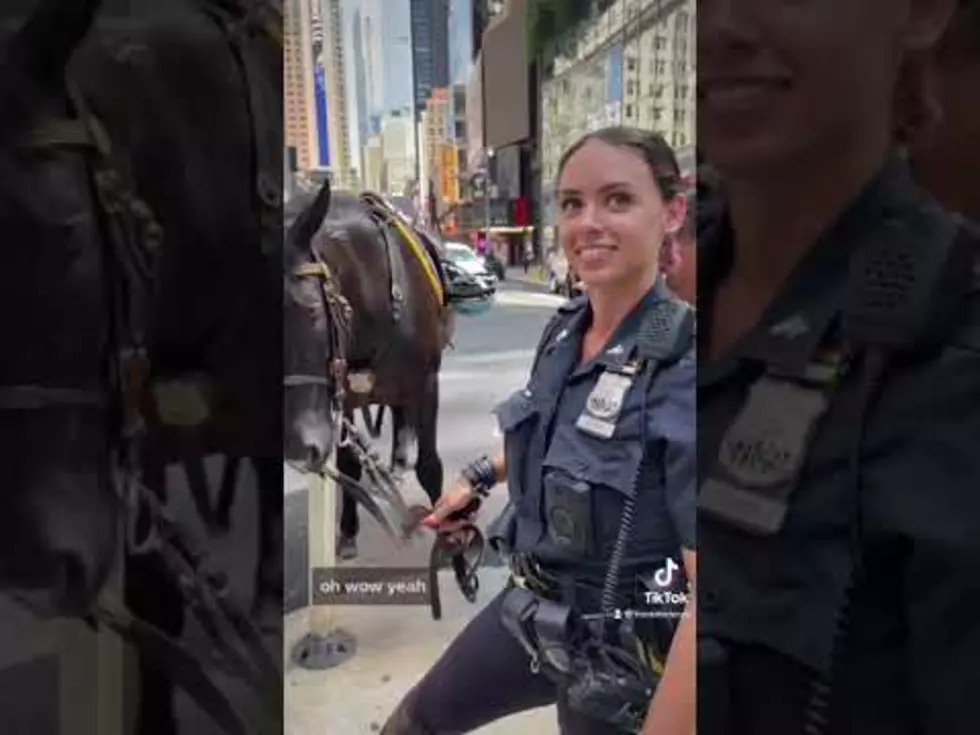
Wyoming Residents Concerned About Proposed Wild Horse Facility
CHEYENNE, Wyo. (AP) — A wild horse facility is looking to make its home in eastern Laramie County, but residents near the proposed site have some major concerns.
The facility would hold wild horses captured by the Bureau of Land Management, and the BLM would pay South Dakota-based Equine Elite an amount for each horse it houses.
But the project hit a snag when it came to gaining approval from neighbors within a 3-mile radius. Due to concerns ranging from water quality to increased traffic, the neighbors didn’t give their approval for the project.
Right now in Laramie County, any Concentrated Animal Feeding Operation needs the consent of property owners within 3 miles of the proposed site of the CAFO. At the request of Equine Elite, the Laramie County Commission is considering lowering the distance to 1 mile.
While the Wyoming Department of Environmental Quality only requires approval from property owners within one mile, the county commissioners changed its rules to 3 miles years ago when a swine CAFO attempted to situate in Laramie County.
Ron Butler owns one of the properties closest to the proposed wild horse facility. If the commissioners ultimately decide to lower the distance to 1 mile, Butler’s approval might not be required, depending on where Equine Elite builds the stables.
“This takes away pre-existing protections from landowners by changing the rules,” Butler told the Wyoming Tribune Eagle.
The public notice and review process for the statute change will begin Tuesday.
“There’s still a lot of things that have to happen before it comes before the commissioners,” County Commission Chairwoman Linda Heath said.
Heath said the public hearings will give residents a chance to voice their opinions and share their viewpoints with the commissioners before they make a final decision.
Though the plan is in its beginning phases, residents within the original three-mile radius are not fond of the proposed facility or changes to the Laramie County statute. Resident Bob Tierney said he has concerns about water supply and contaminated runoff.
“They adopted the three-mile radius for a reason,” Tierney said.
CAFOs are often utilized in the farming industry because they allow for specialization and large production operations. Perhaps the biggest issue with CAFOs, however, is the amount of waste they produce. According to a report from the U.S. Centers for Disease Control and Prevention, a facility can produce between 2,800 tons and 1.6 million tons a year, depending on the number of animals.
“If it was going to be stinking in their backyards, they wouldn’t like it, either,” Tierney said.
Waste from CAFOs is often used as fertilizer or kept in storage or containment units. The CDC’s report said these practices can affect groundwater and surface water by runoff or leaks from the containment units.
Dale Sandberg now owns the property he grew up on, which is within the three-mile radius. He has another concern about the facility: Where will the water for the horses come from?
“It is going to increase the water supply need,” Sandberg said.
Tierney raised the same issue, saying it would leave less water for people down the line.
Another problem the project might cause is increased traffic in the area. Sandberg said there’s already a decent amount of road activity from the oil production, and this could bring even more. He is against the change, but also noted that the commissioners shouldn’t alter any rule for an existing proposal.
With all that’s up in the air, Butler said it’s important for the residents to have their voices heard. He started an online petition to bring before the county commissioners.
“I think it compromises their quality of life,” Butler said. “It compromises the value of their properties. It compromises their water quality. It’s a myriad of problems.”

More From Wake Up Wyoming









